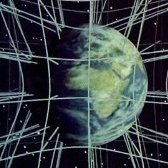Leaderboard
Popular Content
Showing content with the highest reputation on 07/04/20 in all areas
-
If we could remove the extremes at either end, our current system could lead to less of a focus on acquiring more wealth than is necessary. If we want to curb extreme greed and poverty, regulation is our best friend. I know this because of how much the obscenely wealthy hate it, and how much the devastatingly poor need it.1 point
-
Too bad Star Trek:TNG never did explain their system ... "The economics of the future is somewhat different. You see, money doesn’t exist in the 24th century. The acquisition of wealth is no longer the driving force in our lives. We work to better ourselves and the rest of humanity" - Captain Jean-Luc Picard Star Trek: First Contact1 point
-
1 point
-
you don't get one credit for your work you recieve the right to take every right, including breakfast. You do whatever mission you want and feel comfortable doing.1 point
-
Your analogy is flawed. For starters the data and evidence is identical, only name is different. In addition, those that claim lack of bias could still have given higher scores to women. It does show that there is indeed a problem, but it is not symmetrical, even in a women-dominated field, which is curious.1 point
-
Very interesting topic, very interesting comments. Not sure I haven't missed some of the important points. The initial concept of money was far simpler and far less risky than today's. And it was necessary. If I grow beans and you make leather, there should be a way in which you and I agree to exchange our products even if you're not interested in my beans and/or I'm not interested in your leather (see Markus Hanke's point above about "barter-based societies are not good enough"). That's what money originally was invented for. Leather and beans are demanded in sufficient generality so that you and I can produce notes exchangeable for beans or leather for everybody to accept them as payment in any concept. With this old concept, money represents a wealth that has already been produced. But this requires trust (see MigL's point). Then, along came the money lenders in Venice (initially only Jewish families); and later, also Christian families, like the Medici, followed suit. Now it's possible to lend money for an interest. It's also possible to lend money you don't have, because: 1) Not everybody needs all the money at the same time. 2) You can pay with money you don't have, but you think you will have. That complicates things enormously, because value gets entangled with time and predictability. Then, along came the Dutch, who invented the stock market; and followed the British (who sold the idea to everybody else) and invented a concept of money that represents a value that doesn't as yet exist (the wealth will come later). William Paterson invents the Bank of England, and gets us farther and farther into this new concept of money that's entangled with the future and the will to make money from money (see Studiot's point). The last unfortunate development (besides different sophisticated new ways of selling wealth that doesn't yet exist) is the modern banking system. Now, not only unpredictability is entangled every which way. Money is created as pure debt ab initio by banks, which also decide who's going to have it and who isn't. So even the primitive concept of money as a unit of exchange and account for the wealth you have produced has been completely lost. Summarizing: A) Money is based on trust: So, +1. Don't burn your money just yet. People still trust it. +1. Barter alone doesn't cut it. You need a universally accepted unit of exchange and account. +1. Greed. The possession of money leads to trying to find ways to get more money from your money. The people who can't make leather, or grow beans, or do anything real, but crunch numbers. Those are called bankers and investors.1 point
-
If you will be using your motors and generators near their intended regime (rotational speed, voltage, load), then it is often good enough to just look at the motor/generator nameplate - the efficiency should be stated there. It very much depends on the motor type, class, size... A small asynchronous motor (around 1kW) might be 80-90% efficient. Larger motors have higher efficiency than smaller ones. Technology makes difference too - a permanent magnet brushless DC motor are usually more efficient that equal-power common squirrel-cage asynchronous motor. High-efficency motors can cost significant money. However, if you will be using your motor in wide range of working regimes, just looking at the nameplate efficiency might not be good enough. For more expensive motors you will probably be able to obtain efficiency diagrams from the motor manufacturer. This would be perfect, because calculating it from first principles is difficult - you would need to know everything about motor construction to calculate it properly (in this case, it would be much easier to just measure it than to try the calculation). For qualitative analysis and orientation, you will be able to find various efficiency curves by googling. Some general efficiency notes: - the core loses are usually divided into two parts: hysteresis loses (depends on quality of silicon steel used in your motor - hysteresis loses are roughly proportional to the frequency, keeping other things the same) and eddy-current loses (depends on the resistance of silicon steel and lamination thickness used in your motor - these are roughly proportional to the square of the frequency). In a typical motor, at its nominal speed, the hysteresis and eddy-current loses are about the same. - the copper loses might be about the same as the core loses (in nominal regime). In some types of motor, these can be relatively easy to compute if you know motor current and winding resistance. - mechanical loses are usually divided into bearing loses and (in some constructions) cooling fan loses. Normally are smaller than copper loses and core (iron) loses. - motor efficiency very much depends on the load - the best efficiency is often when your motor gives 70-80% of its nominal load. At low loads, of course, the efficiency drops drastically. - you usually regulate your motor using some circuitry (motor driver). Modern semiconductor drivers (like inverters) can have efficiencies well above 90%. Still, take it in account. Only if you will be designing motors themselves, you will need to dig deeper than simply analyzing motor efficiency curves. Today you would be typically using computers and numerical-analysis software to compute your motor efficiency. Batteries are chemistry and not my area, but of course they have limited efficiency (as anything else). I see that a typical lithium-ion battery might have charge/discharge efficiency of about 80-90%. Of course, if you are not actually charging/discharging your battery, like in the case when you are generating just as much power as you are spending, then this efficiency is not a concern. But you will occasionally charge/discharge your battery (otherwise, you would not even have the battery in the first place). Another source of battery loses is the self-discharge. This means, a battery will lose some percentage of stored energy with time - even if you don't charge/discharge it. I understand that lithium-ion batteries have fairly small self-discharge, so unless you need a long-time storage it is not so much a concern. As everything else, I expect that battery efficiency depend on quality of construction, and this affects the battery price. Gearboxes can be made to have very high efficiency, fairly over 90% - but it again depends on the construction (worm gear is not very efficient, while helical gears can be). Unfortunately, a good gearbox can be surprisingly expensive as it requires high precision. A trivial example: you have an inverter (efficiency 95%) that runs a motor (efficiency 90%) that drives a gearbox (efficiency 95%) that drives a generator (efficiency 90%) that charges a battery over a rectifier (efficiency 97%). Later you discharge the battery (efficiency 85%) to produce electricity for something useful... The fact is that the electrical energy that you obtained from this battery is only about 60% of what you spent in the first place: total_efficiency=0.95*0.90*0.95*0.90*0.98*0.85. I cannot recommend any good source on the Internet - I am sure there must be many, but I just tend google for anything specific and usually find something useful. Hopefully somebody else will provide a good link.1 point
-
So did the Khmer Rouge during their regime in 1970s Cambodia - they abolished all currency and pretty much any trace of a money-based economy, and reverted to bartering between communes instead. We all know how this turned out. In my humble and wholly unqualified opinion money is a dangerous thing if it is not seen for what it really is (a social convention), but I would be enough of a realist to recognise that currently there are few if any alternatives that would actually work in practice. Many attempts have been made throughout history to set up communities/societies that don’t use money, and to the best of my knowledge none of them have worked out in the end.1 point
-
Text books are about the next best thing to formal training. I never pay attention to anything YouTube unless I can quarantee the poster is a well accredited physicist in the field of his or her expertise. ( The field of physics is highly diverse. I can quarantee someone like Swansont far beats my skills in his specialty. While I have my own specialty (cosmology)). So research on a topic should never be blind faith. If you cannot find numerous support on a theory by different professional opinions then be wary. Lol though I give credits to Studiot for applied engineering physics, Marcus for relativity and Janus for astrophysics. The information in this thread does not meet any criteria to question the second law in thermodynamics in any cosmology related studies I am familiar with including QFT related applications. You are absolutely correct to question the above. So +1 for that.1 point
-
You guys go ahead and burn all your money. I'll see how it works out, and MAYBE I'll do the same. But I won't be the sucker who goes first.1 point
-
As with everything else you see on YouTube, be prepared to do some research on your own ( in good old fashioned books ), to separate the wheat from the chaff, AND the 'made-up'.1 point
-
@sethoflagos You can read about an experiment showing this here: https://www.nature.com/news/2002/020722/full/news020722-2.html Second Law is true on average though, so you won't ever see a cup spontaneously unbreak or all the air move to one side of a room.1 point
-
So, two measurements are required to ensure fair an equable application of the principle: A measure of the acceptable content of the breakfast A measure of that portion of "your mission" that is to be applied to compensate for the breakfast In today's society we call these measures money. How does your proposal differ?1 point
-
Perhaps you didn't read my OP carefully - I dispute that these 'so-called second law violations' exist at all precisely because they ignore the concept of formal states. In particular these examples depict what I presume is a microcanonical ensemble (no heat bath is indicated) which in statistical mechanics (as I understand it at least) has a clearly defined equilibrium NVE state. ie the ensemble consists of all those possible accessible permutations of that number of particles (N) occupying a constant volume (V) within a vanishingly thin band of total energy (E). I trust that you agree that this corresponds to a formal state. The next slide presents (presumably) the same N particles occupying only half the volume, claiming that this an inescapable result of statistical mechanics. Would you agree that this corresponds to an entirely different formal state (with undefined total energy to boot)? Personally, I dispute that such a state could evolve for even the briefest of flickers because in that instant, it 'forgets' its earlier state - the information necessary for restoring it has been irretrievably lost due to the proposed macroscopic drop in entropy. The change would be permanent. This is significant. If we accept the smallest possibility of such an event, we accept higher frequency occurrence of less extreme random deviations and so on until we no longer have meaningful conservation laws - isolated systems would be continuously changing their properties in a continuous random walk with expected deviation propotional to the square root of time elapsed. I am amazed that so many seem to buy into this concept, without apparently the slightest shred of empirical evidence.1 point
-
Here are some lecture notes starting with -Review of discrete probability theory (5 pages) This may guide you towards what parts of math you wish/need to check. -Shannon's measure of information (15 pages) kind of "Mathematical relations between probabilities and information content" http://www.isiweb.ee.ethz.ch/archive/massey_scr/adit1.pdf I've not checked the details of the pdf but it looks decent; found it by searching for university course material for information theory. Note: following is based on a mix of formal studies and practical experience from engineering. It may or may not match what an active scientist would say. Maybe a table of concepts, bottom up*, and corresponding examples of related computer science task or concepts will help: Overview: 1: Information Theory: Entropy of information. Mathematical foundation. Practical examples: Theoretical capacity of a network connection. lossy vs lossless data compression, parity checking, error correction 2: Information Representation: What is used to represent data, what does the bits mean at a basic level Practical examples: Low level protocols. Character sets such as unicode. Concepts; line endings, byte orders 3: Information structure: Data structures usually tied to programming and algorithms Practical examples: What are hash tables, linked lists, trees, graphs 4: Higher level information organisation: organisation such as databases. Practical example: SQL database, Data lake Study: When I first studied computer science the order was 3, 2, 4 + 1 (4 and 1 was parallel IIRC). Right before 3 was some programming and algorithms was immediately after 3. I guess you could be a good programmer with knowledge of only (3) but knowledge of the other helps. *) 1-4 are my rough way of ordering the things for this discussion. There are overlaps, there are examples where the order is different and there are many cases where 1-4 would be nested.1 point
-
I think I get the general idea. +1 for ambition, I will remember to log on again in 3020 to find out how you got on. Meanwhile here are a few thoughts. If you have access to a library look at the contents pages of compendia of mathematics books. I have a couple by that name, one by Manzel (2 vols) and one by Meyler and Sutton. There is also the Princeton Companion to Mathematics and the Cambridge Encyclopedia of Mathematics. The contents pages should give you some subject headings to think about. Also some authors publish dependencies or dependecy diagrams such as "chapters 4 -7 should be read before chapter 11". though this is more common in Engineering than Mathematics. However such information from either subject could be very useful, as it shows what depnds on what. As regards the subject areas themselves I suggest you don't use the tree analogy. This reuqires that the 'branches' are separate areas or subjects. In truth there is considerable overlap and I don't thionk there is a single 'branch' that could stand alone by itself. There is considerable overlap, For instance although Geometry does not require measurement, you could not do Geometry without numbers even for shape and form. How else could your distinguish triangles, squares, pentagons hexagons etc? So I suggest you go for a tiled presentation, perhaps a bit more formal than in Ghedieons diagram (+1 for finding that). With suitable overlap or overlay you can sowh the interactions. Go well in your endeavour.1 point
-
"I am a layman trying to understand above theorems. This could be a stupid question." There is no such thing as a stupid question! "Does these theorems imply that we actually cannot prove that 2+2 = 4???" Gosh, I may have to reconsider! No, Godel's theorem say that, given any set of axioms large enough to encompass the properties of the non-negative integers there must exist some theorem that can neither be prove nor disproved. It does not say that a specific theorem cannot be proved. In fact, if we were able to identify a specific theorem that can not be proved nor disproved, we can always extend the axioms, perhaps by adding that theorem itself as an axiom, so that theorem can be proved. Of course, there would then be still another theorem that cannot be proved nor disproved.1 point
-
I can relate with every word here. Bravo! I'm 49 and didn't even know I was on the spectrum until about 3 years ago. Back to OP. I don't know how far you have gotten with your student but I know when I was a kid in high school and after I had mastered trig and and trig based physics I had a giant shock, a trauma really. At that time, calculus and that progression in physics felt like someone telling me that "everything you have just learned isn't correct". I thought I knew precisely how most things worked, but then I was told to start over from scratch where everything is much messier. I crashed and burned. My academic career never really recovered until a a few years ago. Break the news to the gently and when you change from one way of thinking to another, make sure they understand why. Also they should know that they do not need to forget or disregard the previous way of thinking because it is still useful. I hope this helps.1 point










